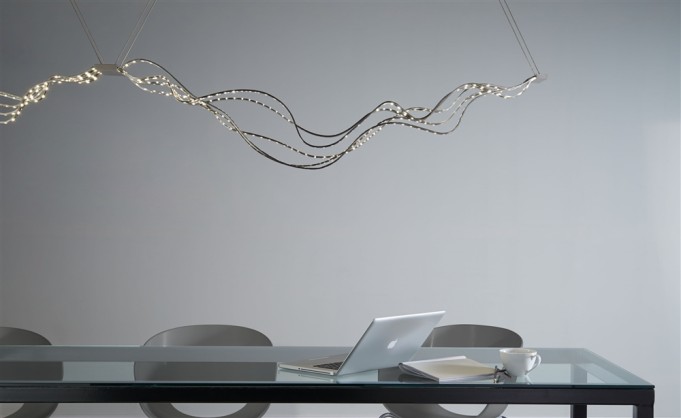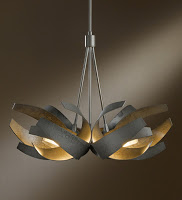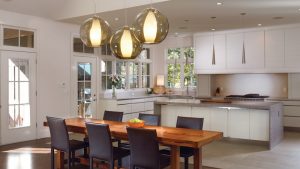Apr 2019
Understanding LED Light Bulbs
Q: It used to be easy to replace a light bulb; now there are so many options, I don’t know what to choose. What do you recommend?
A: It’s hard to imagine a household commodity that has changed more in the last five years than the light bulb. The incandescent bulbs we all grew up with wasted a lot of energy and have been phased out. Government mandates ushered in the brief reign of the more efficient, but widely despised, compact fluorescent bulbs, or CFLs, which emit terrible-quality light and are difficult to dispose of because of their mercury content. The public’s loathing of CFLs accelerated the development of light-emitting-diode bulbs known as LEDs, which now rule the lighting world. These use up to 80 percent less energy than the old incandescents and can last for decades. LEDs are improving all the time and their prices are coming down. However, the quality of light they produce varies significantly, so it’s helpful to understand some lighting nomenclature before you buy.
Most LED bulb boxes have a Lighting Facts label that indicates brightness (measured in lumens), color temperature (labeled K for Kelvin temperature), energy use, estimated energy costs, and expected life. Since most packages also specify the type of incandescent bulb the LED replaces, you don’t need to pay much attention to the brightness measure. Instead, zero in on color temperature: 3,000K is my recommendation for a universally flattering, warm-white light. Anything higher is going to have a cooler, bluish-white cast. Another good measure is the Color Rendering Index, or CRI, which tells you how accurately the bulb renders colors compared to an incandescent bulb, which has a CRI of 100. For LEDs, a CRI of 80 or higher is best.
To ensure an LED will fit in your fixture, bring your old bulb with you to the store and compare the bases. The splayed fins that LEDs have to dissipate heat make them larger than other bulbs. Make sure the bulb is dimmable (you may need to replace your dimmer switches with LED-friendly ones to avoid annoying flickering or buzzing). And if you plan to use the bulb outdoors and/or in an enclosed fixture (some LEDs require more airflow than these lights provide), check that these applications are noted on the box.
If you haven’t already, now’s the time to embrace this new technology — unlike previous innovations, this one is here to stay.
Mar 2014
Current Trends in the Lighting Industry

Here is an example of what is happening in the the world of lighting today and what will continue to happen in the foreseeable future. LED’s are all the rage and designers are finding all sorts of new ways to incorporate them into light fixtures. The reasons are clear: LED’s consume far less energy than incandescent light bulbs, LED’s are cool to the touch, LED’s have better color temperature than they did in the past, LED’s have a super long life, and LED’s are small so fixture design can be very creative. In addition to LED fixtures like this one, LED light bulb design is evolving very quickly also. Technicians are finding ways to make them more attractive and more like the good old fashioned incandescent light bulbs. Some of the new LED light bulbs even grow warmer in color temperature as they are dimmed, just like incandescent light bulbs do. Additionally, new, more efficient heat sink materials are being developed which allow LED light bulbs be more streamlined and closer in appearance to both A-lamps and candelabra bulbs. Pretty soon you will be able to use LED bulbs in chandeliers and not notice a difference between them and the candelabra bulbs they replace. Best of all, LED’s are becoming less expensive all the time as manufacturing becomes more efficient and more manufacturers enter the marketplace. As with anything though, I urge you to be careful when buying any LED product as there still are huge quality differences among the myriad of products and producers out there. Try to see the product before you buy it to make sure the color of the light is acceptable to you. I recommend buying dimmable LED light bulbs and fixtures – some LED’s are not dimmable. I also recommend caution in using dedicated LED recessed lighting fixtures. Once you install them they are in the ceiling a long time and the quality of the light might not be satisfactory for you. Instead, consider buying a regular recessed fixture and using an LED light bulb. That way you are not locked in. Please visit our website www.fogglighting.com and like us on Facebook. You also might be interested in the Underwriter’s Laboratory app, LightSmart, which can be downloaded from the App Store. It has all kinds of great information about lighting…and its free.
Jul 2013
Decorative Lighting Guidelines for any Room – Pendants

Decorative lighting includes Wall Sconces, Chandeliers, Flush Mounts, Semi-Flush Mounts and Pendants. The proper combinations of these five elements insure an interesting, attractive lighting design for any room. Using different elements of lighting is called layering. Many layers of light make the difference between an OK room and WOW room.
 |
| How’s This For a Cool Pendant! |
Pendants are perhaps the most versatile of all decorative lighting fixtures.They can be as dramatic as a chandelier, as understated as a wall sconce or as functional as a floor lamp. They can be used to provide ambient, task or accent illumination. They can be used alone on in groupings. They are available as line voltage, low voltage halogen and LED. They can be made of glass or metal or a combination. They can be modern, traditional or transitional. Whatever your taste and lighting need there is a pendant for you.
Pendants are traditionally used in kitchens as task or accent lighting over islands, sinks or kitchen tables. But pendants are also used in foyers, in hallways with high ceilings, in dinning rooms over tables and in bathrooms. They are used as exterior fixtures on porches and entries. As long as you have adequate ceiling height, you can use pendants almost anywhere.
When choosing a pendant be sure that the light output meets your lighting needs. I have customers who would love to have small, colorful pendants over task ares in their kitchens. Unfortunately most of these do not provide enough task light for the application. So unless you can supplement the light with recessed lighting, such fixtures do not provide sufficient lighting for kitchen tasks. Be a savvy shopper and always match your lighting needs to the fixture you are buying.
Please visit http://www.fogglighting.com and like us on Facebook. I am always available for consultations on lighting plans.

